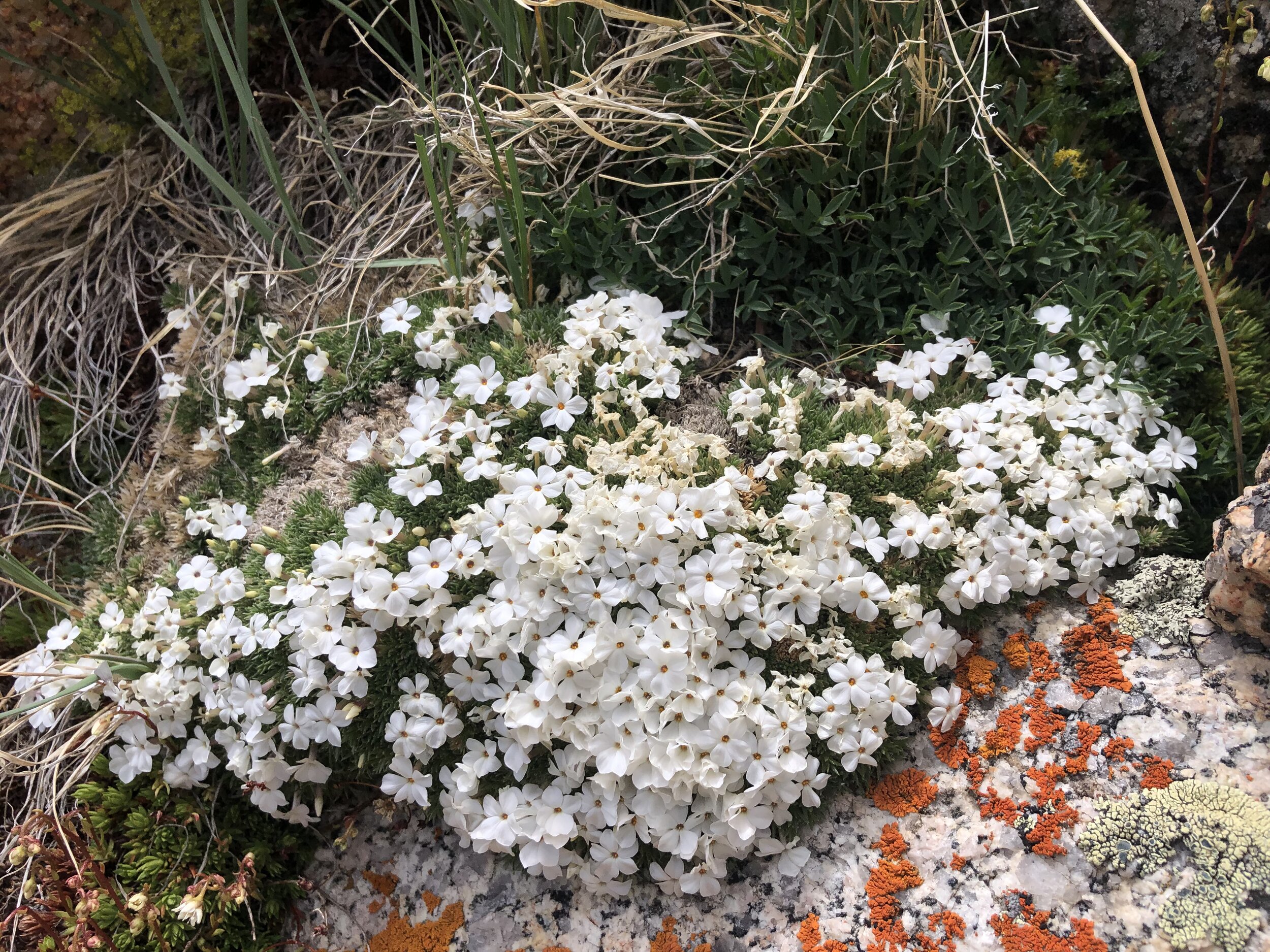Saxifraga odontoloma, July 8, 2021
S. odontoloma, Tabor Creek, 12,000’, July 25, 2021 (photo courtesy of Amanda Crow)
Common & scientific name
Brook saxifrage, Micranthes odontoloma
Family
Saxifrage, Saxifragaceae
Location
Mountain Boy, 11,600’
Fun, weird, helpful, or little known fact
The rosy-pink centers of its intricate, white-petaled flowers, splaying out from a leafless stem and usually set against a babbling brook background, makes Brook saxifrage one of the true delights of a summer hike. It’s toothed, bright-green, heart-shaped basal leaves add to this plant’s consummate beauty.
S. odontoloma, lower Lost Man, 10,500’, July 20, 2021





































